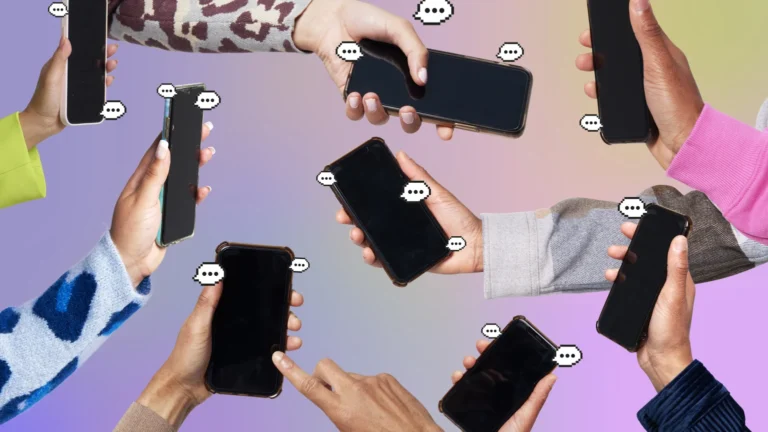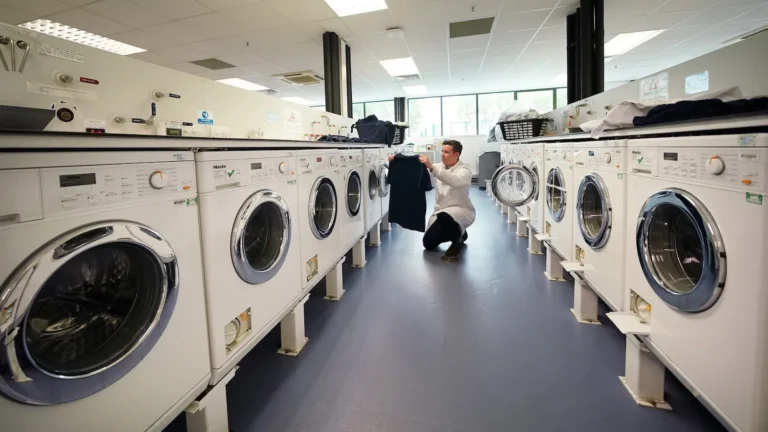During teleworking, it is essential to maintain a productive and professional environment. Here are a few dos and don’ts to keep in mind. Do establish a dedicated workspace that is free from distractions and comfortable for extended periods of work. Do maintain regular communication with your colleagues and supervisors through video conferences, emails, and instant messaging platforms. Do dress appropriately, as if you were going to the office, to set a professional tone and mindset. Do take regular breaks to stretch, relax, and avoid burnout. Don’t neglect your self-care routine, including proper nutrition, exercise, and sleep. Don’t let household chores or personal tasks interfere with your work hours. Don’t forget to set clear boundaries between work and personal life to maintain a healthy work-life balance. Don’t hesitate to ask for support or clarification when needed. By following these guidelines, you can optimize your teleworking experience.
Memorial Day: Commemorating Sacrifice and Reflecting on the True Cost of War
Memorial Day, observed on the last Monday of May each year, holds deep significance in the United States. It is a time for the nation to come together and honor the brave men and women who made the ultimate sacrifice while serving in the country’s armed forces. In this article, we will delve into the history and meaning of Memorial Day, shedding light on the impact of wars on people of color, undocumented individuals in the military, and marginalized communities. Furthermore, we will explore the profound toll that war takes on individuals and their families, encompassing emotional, mental, and financial hardships.
The origins of Memorial Day can be traced back to the aftermath of the American Civil War. On May 5, 1868, General John A. Logan, the leader of a Union veterans’ organization known as the Grand Army of the Republic, issued a proclamation designating May 30 as Decoration Day. This day was set aside for the decoration of the graves of fallen soldiers with flowers and flags. Over time, Decoration Day evolved into what we now know as Memorial Day, encompassing remembrance not only of Civil War soldiers but also those who perished in subsequent conflicts.
Memorial Day serves as a poignant reminder of the sacrifice made by service members throughout history, particularly those from marginalized communities. In many American wars, people of color have played vital roles, often facing discrimination and inequality. Before the Civil Rights Act of 1964, African Americans and other minorities encountered significant obstacles in the military. Despite these challenges, they demonstrated unwavering bravery and dedication, contributing significantly to the nation’s defense.
The casualties of war among people of color are significant. In World War II, for instance, over one million African Americans served in the armed forces, with an estimated 7,000 losing their lives. Similarly, during the Korean War, approximately 600,000 African Americans served, and over 2,000 lost their lives. In the Vietnam War, around 275,000 African Americans served, and more than 7,200 died. These numbers represent just a fraction of the countless sacrifices made by people of color throughout American history.
The United States military continues to be a diverse institution, with individuals from various backgrounds serving their country. Undocumented immigrants also make up a notable portion of the armed forces. While precise statistics on undocumented service members are challenging to obtain due to the nature of their status, it is estimated that thousands of undocumented individuals serve in the military, displaying immense courage despite their uncertain legal circumstances.
The LGBTQ+ community, minorities, and disabled individuals have also made significant contributions to the military, becoming veterans in their own right. An estimated one million LGBTQ+ veterans have served, even during periods of discrimination and exclusion. Similarly, minority and disabled veterans have displayed remarkable resilience and valor, often facing additional hurdles in accessing healthcare and support services upon returning from war.
The cost of war extends far beyond the battlefield, impacting individuals and families long after conflicts have ended. Families of service members endure emotional anguish, coping with anxiety, depression, and the constant fear for their loved ones’ safety. Mental health challenges such as post-traumatic stress disorder (PTSD) can afflict both veterans and their families, causing profound disruptions in their lives. Financial hardships also arise, as some veterans struggle to find stable employment and housing upon their return.
Memorial Day stands as a solemn occasion to honor the fallen, acknowledging the sacrifices made by individuals from all walks of life. It serves as a poignant reminder of the true cost of war, not only in terms of lives lost but also in the enduring hardships faced by veterans and their families.
As we gather to commemorate Memorial Day, it is crucial to recognize the immense contributions of people of color throughout history and their sacrifices in defending the nation. Despite facing discrimination and inequality, these individuals demonstrated unwavering courage and patriotism. Their commitment to the ideals of freedom and justice has left an indelible mark on the fabric of American society.
Undocumented individuals who serve in the military also deserve acknowledgment. Although their numbers are difficult to ascertain due to their legal status, their willingness to protect and defend a country that may not recognize their full rights is a testament to their dedication and bravery.
Furthermore, it is essential to highlight the experiences of marginalized communities as veterans. LGBTQ+ individuals, minorities, and disabled people have served with honor and distinction, often facing additional challenges upon returning home. These challenges include discrimination, limited access to healthcare and support services, and the need for inclusive policies that address their unique needs.
The toll of war extends beyond the battlefield and affects the lives of individuals and families in profound ways. The emotional burden borne by families who anxiously await their loved ones’ safe return cannot be overstated. The mental health repercussions of war, such as PTSD, can have long-lasting effects on veterans and their families, requiring comprehensive support systems to aid in their recovery.
Financial hardships are another consequence that many veterans face. The transition to civilian life can be challenging, with difficulties in finding employment, accessing affordable housing, and receiving adequate healthcare. The economic impact of war often burdens families, exacerbating the strain on their well-being.
In conclusion, Memorial Day serves as a vital reminder of the sacrifices made by those who have served in the United States armed forces. It is a day to reflect not only on the lives lost in the pursuit of freedom but also on the enduring struggles faced by veterans and their families. It is a call to action to provide comprehensive support and resources to all veterans, regardless of their background, ensuring that their sacrifices are honored and their needs are met. As we honor the fallen, let us strive for a more inclusive and compassionate society that values the well-being of all those who have served and continue to serve.
The Addictive Grip of Social Media
In the past decade, the rise of social media has revolutionized how we connect, share, and consume information. However, this digital transformation has come with a price. Social media platforms have been deliberately designed to foster addiction, capturing our attention and holding it hostage. In this article, we will explore the addictive nature of social media, its impact on attention span, the effects on children’s brain development, the positive aspects of social media, and strategies to help wean children and young teens off excessive social media and smartphone app usage.
Social media platforms employ various techniques to keep users engaged for extended periods. Endless scrolling, autoplay videos, notifications, and personalized content algorithms are all designed to maximize user interaction. The average attention span has dwindled over the years, with studies showing that it has decreased from 12 seconds in 2000 to a mere 8 seconds in 2020, resembling the attention span of a goldfish.
Children and young teens are particularly vulnerable to the addictive qualities of social media. Research suggests that excessive screen time and social media usage can hinder brain development, affecting areas responsible for attention, decision-making, and emotional regulation. Moreover, early exposure to social media may lead to a distorted perception of reality and an increased risk of anxiety, depression, and cyberbullying.
Despite its addictive nature, social media has its advantages. It allows us to connect with distant friends and family, access valuable information, and create communities of shared interests. Social media platforms have been instrumental in spreading awareness about social issues and empowering marginalized voices. However, excessive usage can lead to decreased face-to-face social interaction, sleep disturbances, and a negative impact on mental health.
Strategies for Healthy Digital Habits:
To help children and young teens develop healthy digital habits, here are ten strategies to wean them off excessive social media and smartphone app usage:
1. Set boundaries: Establish clear rules regarding screen time and social media usage.
2. Encourage offline activities: Engage children in hobbies, sports, and creative pursuits that do not involve screens.
3. Foster face-to-face connections: Encourage in-person interactions with friends and family members.
4. Educate on responsible use: Teach children about online safety, privacy, and the potential consequences of overexposure.
5. Lead by example: Limit your own screen time and prioritize quality time with your child.
6. Create device-free zones: Designate areas in your home where devices are not allowed, such as bedrooms or mealtime.
7. Practice digital detox: Encourage regular breaks from screens and engage in activities that promote mindfulness and relaxation.
8. Promote critical thinking: Teach children to question the authenticity and reliability of online content.
9. Encourage self-expression: Encourage children to express themselves offline through writing, art, or other creative outlets.
10. Stay involved: Monitor your child’s online activities, be aware of the platforms they use, and engage in open conversations about their digital experiences.
Conclusion:
While social media offers undeniable benefits, its addictive nature and impact on children’s brain development should not be ignored. By adopting strategies for healthy digital habits, we can empower children and young teens to navigate the digital world responsibly and develop a balanced relationship with social media and smartphone apps. It is crucial to strike a balance that allows them to harness the positives while minimizing the negatives, ensuring their overall well-being and healthy development.
How do you tackle microplastics? Start with your washing machine. By Saqin Rajiv-Grist
How do you tackle microplastics? Start with your washing machine.
As environmental challenges go, microfiber pollution has come from practically out of nowhere. It was only a decade or so ago that scientists first suspected our clothing, increasingly made of synthetic materials like polyester and nylon, might be major contributors to the global plastic problem.
Today a growing body of science suggests the tiny strands that slough off clothes are everywhere and in everything. By one estimate, they account for as much as one-third of all microplastics released to the ocean. They’ve been found on Mount Everest and in the Mariana Trench, along with tap water, plankton, shrimp guts, and our poo.
Research has yet to establish just what this means for human and planetary health. But the emerging science has left some governments, particularly in the Global North, scrambling to respond. Their first target: the humble washing machine, which environmentalists say represents a major way microfiber pollution reaches the environment.
Late last month a California State Assembly committee held a hearing on Assembly Bill 1628, which would require new washing machines to include devices that trap particles down to 100 micrometers — roughly the width of human hair — by 2029. The Golden State isn’t alone here, or even first. France already approved such a requirement, effective 2025. Lawmakers in Oregon and Ontario, Canada have considered similar bills. The European Commission says it’ll do the same in 2025.
Environmental groups, earth scientists and some outdoor apparel companies cheer the policies as an important first response to a massive problem. But quietly, some sustainability experts feel perplexed by all the focus on washers. They doubt filters will achieve much, and say what’s really needed is a comprehensive shift in how we make, clean and dispose of clothes.
The wash is “only one shedding point in the lifecycle of the garment. To focus on that tiny, tiny moment of laundry is completely nuts,” said Richard Blackburn, a professor of sustainable materials at the University of Leeds. “It would be much better to focus on the whole life cycle of the garment, of which the manufacturing stage is much more significant in terms of loss than laundering, but all points should be considered.”
Today, some 60 percent of all textiles incorporate synthetic material. Anyone who’s worn yoga pants, workout gear or stretchy jeans knows the benefits: These materials add softness, wicking and flexibility. Under a microscope, though, they look a lot like plain old plastic. From the moment they’re made, synthetic clothes — like all clothes — release tiny shreds of themselves. Once liberated these fibers are no easier to retrieve than glitter tossed into the wind. But their size, shape, and tendency to absorb chemicals leaves scientists concerned about their impacts on habitats and the food chain.
Anja Brandon is an associate director for U.S. plastics policy at the Ocean Conservancy who has supported the California and Oregon bills. She concedes that filters won’t fix the problem, but believes they offer a way to get started. She also supports clothing innovations but said they could be years away. “I for one don’t want to wait until it’s a five-alarm fire,” she said.
Studies suggest a typical load of laundry can release thousands or even millions of fibers. Commercially available filters, like the PlanetCare, Lint LUV-R and Filtrol, strain the gray water through ultra-fine mesh before flushing it into the world. It’s the owner’s job, of course, to periodically empty that filter — ideally into a trash bag, which Brandon said will secure microfibers better than the status quo of letting them loose into nature.
Washing machine manufacturers in the U.S. and Europe have pushed back, saying the devices pose technical risks, like flooding and increased energy consumption, that must be addressed first. University experiments with these filters, including an oft-cited 2019 study by the University of Toronto and the Ocean Conservancy, haven’t found these issues, but it’s not a closed case yet: Last year a federal report on microfibers, led by the Environmental Protection Agency and National Oceanic and Atmospheric Administration, called for more research in this vein.
Manufacturers also argue that microfibers originate in a lot of places, but washers are a relatively modest one. As self-serving as that sounds, people who study the issue agree there’s a huge hole in the available science: While we know clothes shed microfibers throughout their lives, we know surprisingly little about when most of it happens.
Some evidence suggests that the friction of simply wearing clothes might release about as many microfibers as washing them. Then there are dryers, which some suspect are a major source of microfiber litter but have been barely studied, according to the federal report. There is also limited knowledge about how much microfiber pollution comes from the developing world, where most people wash by hand. (A recent study led by Hangzhou Dianzi University in Hangzhou, China pointed to this knowledge gap – and found that hand-washing two synthetic fabrics released on average 80 to 90 percent fewer microfiber pollution than machine-washing.)
To Blackburn, it’s obvious that most releases occur in textile mills, where it’s been known for centuries that spinning, weaving, dyeing and finishing fabric spritzes lots of fiber. “Where do you think it goes when we get it out of the factory?” he said. “It goes into the open air.”
He calls filter policies “totally reactionary,” arguing that they would at best shave a few percentage points off the total microfiber problem. But there is one area where Blackburn is in broad agreement with environmentalists: In the long run, tackling the issue will take a lot of new technology. No silver-bullet solution has appeared yet, but a slew of recent announcements reveals a vibrant scene of research and development attacking the problem from many angles.
Some best practices already are known within the industry. For example, more tightly woven clothes, and clothes made of long fibers rather than short ones, fray less. But for years, popular brands like Patagonia and REI have said what they really need is a way to experiment with many different materials and compare their shedding head to head. This has been tricky: Microfibers are, well, micro, and there’s no industry standard on how to measure them.
That might be changing. In separate announcements in February, Hohenstein, a company that develops international standards for textiles, and activewear brand Under Armour revealed new methods in this vein. Under Armour is targeting 75 percent “low-shed” fabrics in its products by 2030.
These approaches would at best reduce microfiber emissions, not eliminate them. So another field of research is what Blackburn calls “biocompatibility”: making microfibers less harmful to nature. California-based companyIntrinsic Advanced Materials sells a pre-treatment, added to fabrics during manufacturing, that it claims helps polyester and nylon biodegrade in seawater within years rather than decades. Blackburn’s own startup, Keracol, develops natural dyes, pulled from things like fruit waste, that break down more easily in nature than synthetic ones.
New ideas to dispose of clothes are also emerging, though some will cause arched eyebrows among environmentalists. This year U.S. chemical giant Eastman will start building a facility in Normandy, France that it claims “unzips” hard-to-recycle plastics, like polyester clothes, into molecular precursors that can be fashioned into new products like clothes and insulation. Critics charge that such “chemical recycling” techniques are not only of dubious benefit to the environment, they’re really just a smokescreen for fossil-fuel corporations trying to keep their product in demand.
Lest anyone forget about washing machines, there’s R&D going after them, too. In January Patagonia and appliance giant Samsung announced a model that they claim cuts micro plastic emissions up to 54%. It’s already rolled out in Europe and Korea. At around the same time, University of Toronto researchers published research on a coating that, they claim, makes nylon fabric more slippery in the wash, reducing friction and thus microfiber emissions by 90 percent after nine washes. In a press release the researchers tut-tutted governments for their focus on washing-machine filters, which they called a “Band-Aid” for the issue.
One continuous thread through all these efforts, of course, is that everyone is working with imperfect information. The emerging science on microfibers – and microplastics in general – suggests they’re a gritty fact of modern life, but doesn’t yet show the magnitude of their harm to humans and other species. For the moment environmentalists, policymakers and manufacturers aren’t just debating whether to put filters on washing machines, but whether we know enough to act. In 20 years, when scientists know a lot more, it’ll be easier to judge whether today’s policies represented proactive leadership on an emerging environmental problem — or a soggy Band-Aid.
Editor’s note: Patagonia is an advertiser with Grist. Advertisers have no role in Grist’s editorial decisions.
This article originally appeared in Grist at https://grist.org/technology/how-do-you-tackle-microplastics-start-with-your-washing-machine/.
Grist is a nonprofit, independent media organization dedicated to telling stories of climate solutions and a just future. Learn more at Grist.org






